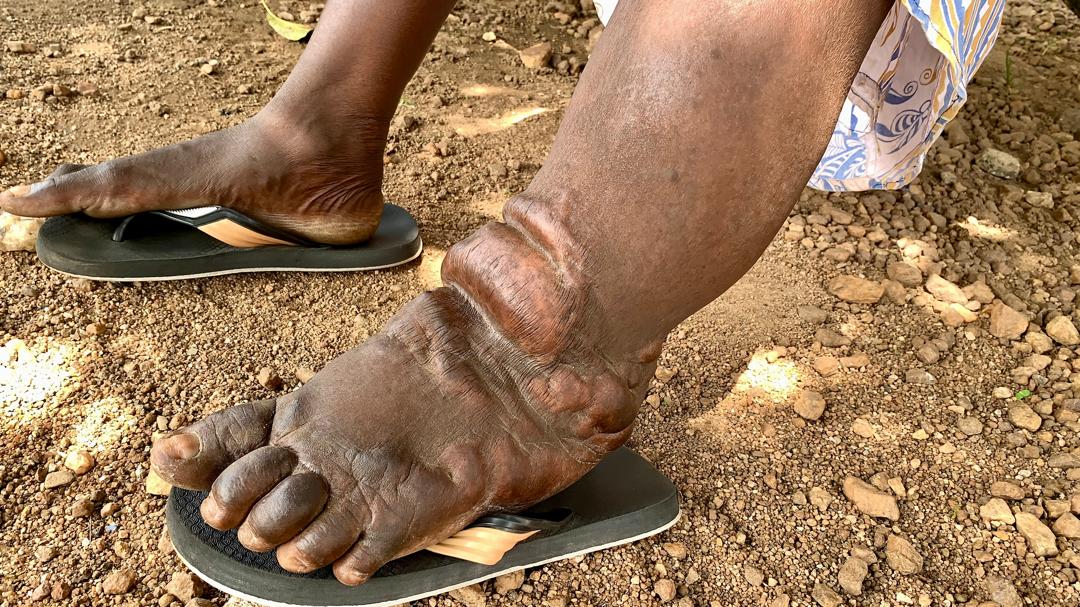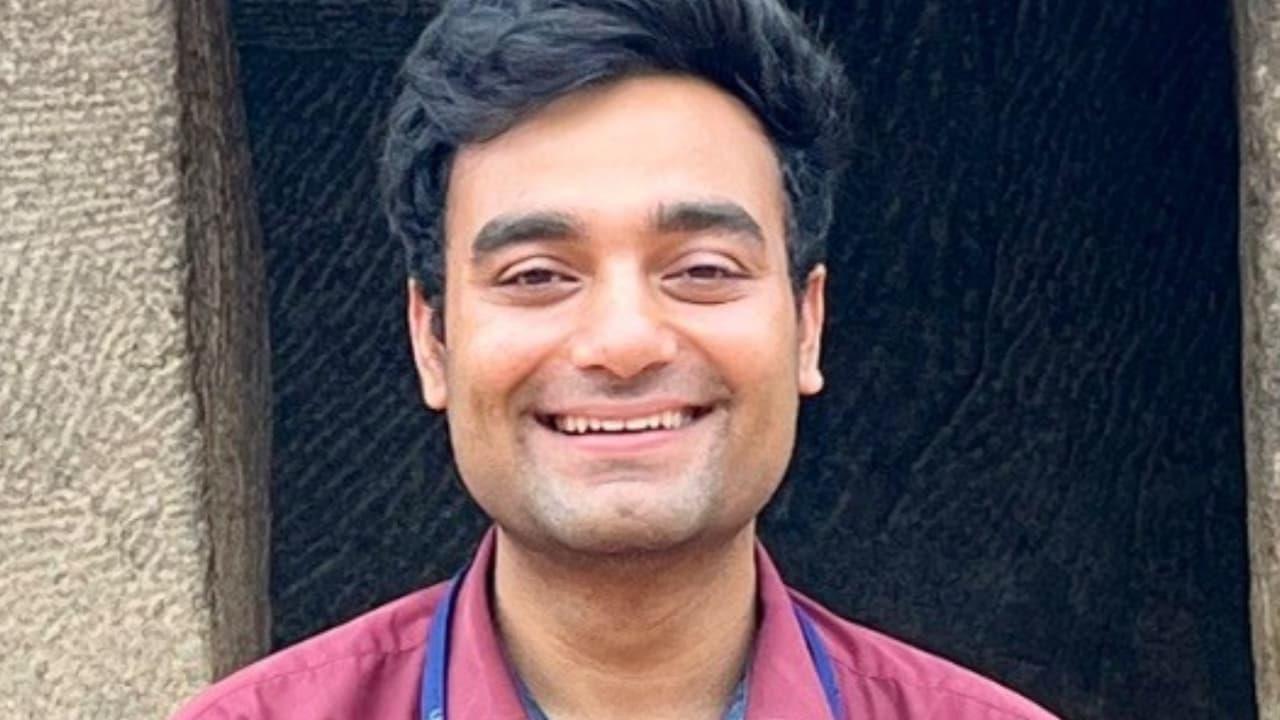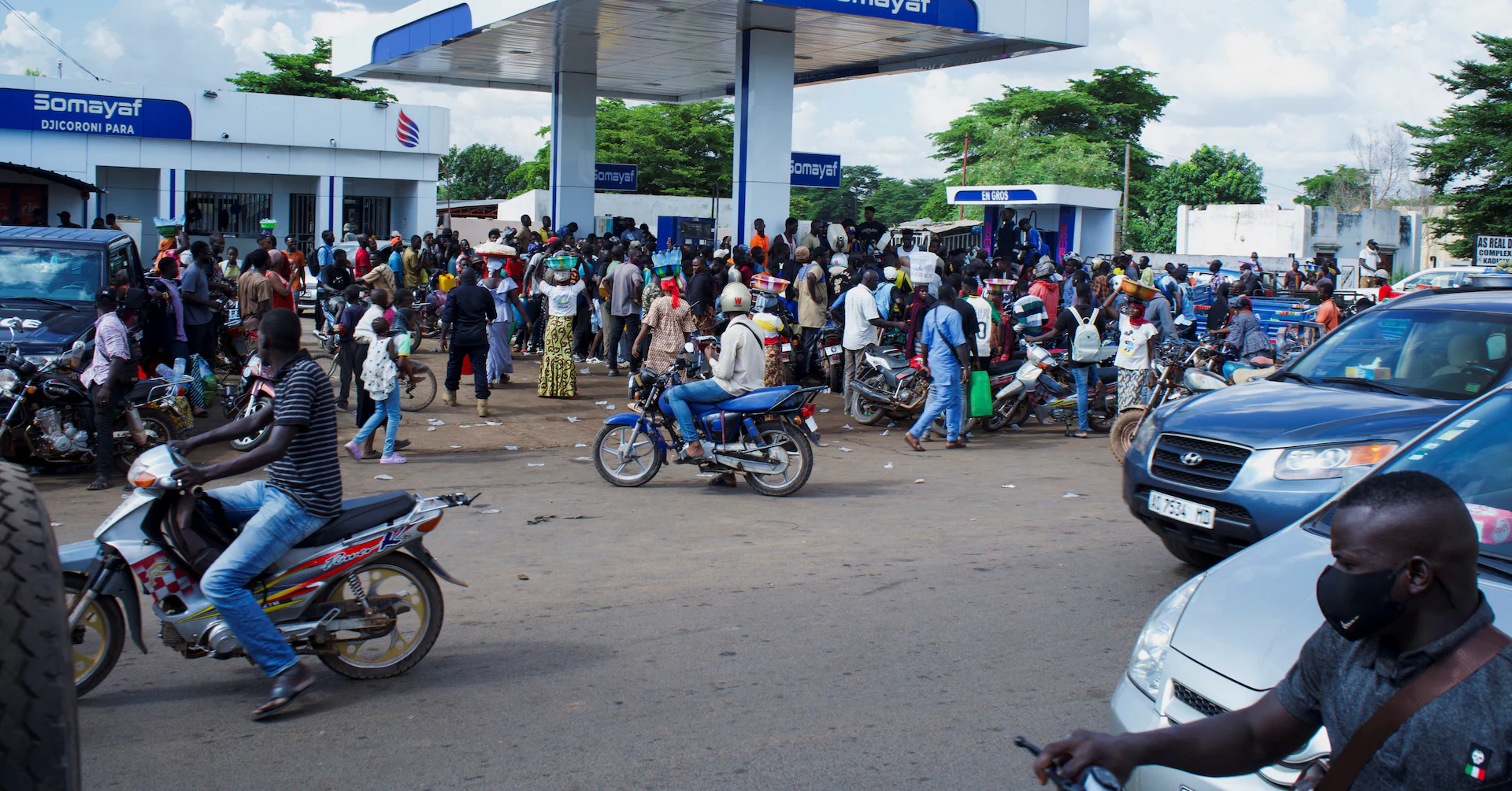Copyright a1radioonline

When 68-year-old farmer Mba Nsoh (not his real name) left his home in the Bongo District to attend his uncle’s funeral in 2005, he had no idea that the solemn journey would mark the beginning of a life-long struggle. As tradition demanded, he and his family travelled to Wegurigo, his mother’s community, to bid farewell to his late uncle. The funeral passed peacefully. But the day after returning home, Mba’s right hand began to swell. Within weeks, the swelling had spread to his leg. “We thought it was spiritual,” Mba recalled. “When we returned, my hand started to swell, and on the third day, the swelling moved to my arm. From there, it moved to my leg, and that was all. I went around seeking treatment at herbal places to no avail. I went to places like Bawku, Garu, and Accra, and even in Burkina, but did not find treatment. Anywhere I went, I was told I had been bewitched. So, I suspected it happened either at the funeral grounds or on our way home.” Years later, medical tests confirmed Mba had elephantiasis, a neglected tropical disease medically known as lymphatic filariasis. But by the time the diagnosis came, the damage was already done — his right leg had swollen permanently, making farming and walking a daily challenge. Medicine meets myth Across the Upper East Region, stories like Mba’s echo from community to community — whispered behind walls, murmured in the corners of funeral gatherings, and debated in the courtyards of healers and chiefs. Elephantiasis, locally known as “natintima” in some parts of the region, is one of Ghana’s most misunderstood diseases. Scientifically, it is called lymphatic filariasis, caused by a microscopic parasitic worm transmitted through the bite of mosquitoes. Yet, in places like Bongo, Talensi, Nabdam, and Binduri, the illness is seen by many as punishment — a spiritual attack, an act of witchcraft, or retribution for breaking taboos. When Mba’s leg began to thicken and harden, neighbours kept their distance. “They said I had been cursed,” he said. “Some refused to shake my hand. Others said I was paying for something my father did.” He didn’t go back to the clinic. Instead, his family sought help from soothsayers and herbalists. “We went to a man in another village. He said I had stepped on someone’s charm at the funeral. They gave me concoctions, bathed me with herbs, and slaughtered a fowl. But it didn’t go.” Seventeen years later, his leg remains swollen — a permanent reminder of myths that still rule over medicine in many northern communities. In another corner of Bongo, Madam Cynthia Agana (not her real name), now in her late sixties, sat quietly on a wooden stool, massaging her right leg with shea butter. She knows the look people give her. She has learned to live with it. “Fifteen years ago, I went with other women to plant groundnuts on my husband’s farm,” she recalled. “As I bent down to sow, something scratched my leg. The next day, I had fever. My leg became swollen and painful.” She sought help everywhere — herbal centers, clinics, and prayer camps. Eventually, she was told it was elephantiasis. “Even though I accepted it, I still believe what they told me,” she said. “What they told me was that I might have stepped on charms. They say some people, after performing sacrifices, pour the herbs on farmlands. And when you see that, it is advisable that you step on them instead of trying to dodge. So, I believe what they told me.” Traditional healers and the unseen battle between faith and science For many who believe elephantiasis is spiritual, the first stop is not a hospital — it’s the home of a herbalist. One such is Azebugre Agene, a traditional healer in the Bongo district. His compound is a blend of medicine and mystique — a yard lined with earthen pots and dried herbs. “I inherited this from my late father,” Agene said, his voice deep and confident. “I treat chronic wounds, madness, epilepsy, and the early stages of elephantiasis.” Before treating a client, he consults the gods. “When a man comes with a swollen leg, I ask him to bring a red cock, another cock with mixed feathers, a new calabash, and an arrow,” he explained. “For women, it is four cowries and four coins. Then I mix herbs, wash them, and pray.” He insists the cause is spiritual. “Sometimes the people who come here either tell me that they stepped on charms. But before I start treatment, I consult the gods. Mostly, it is either the sick person stepped on charms or someone threw charms at the person. That’s why I’m sometimes attacked spiritually when treating people. Those who caused it don’t want me to heal them.” For many locals, Agene’s explanations make more sense than distant medical theories. Science, after all, is invisible. The mosquito cannot be seen; witchcraft can be imagined. The mystery mosquito But for Eric Dakura, the Upper East Regional Disease Control Officer in charge of NTDs, the persistence of these beliefs is both tragic and dangerous. “We’ve had people tell us all sorts of things,” he said with a weary smile. “Some say they got elephantiasis because they slept with another man’s wife. Others say they stepped on an elephant’s dung. Some think their enemies cursed them.” He shook his head. “All these are myths. Elephantiasis is not spiritual. It’s caused by a worm — Wuchereria bancrofti — transmitted by the same mosquito that gives us malaria.” He went on to explain how it happens: “When a mosquito carrying the parasite bites a person, it drops the worm into the bloodstream. These worms travel through the body and settle in the lymphatic vessels — the body’s drainage system. Over time, they block the flow of fluids. The body tries to fight back, but that causes inflammation and scarring. The result is swelling in the legs, arms, breast, or even the scrotum.” Upper East bears Ghana’s highest burden Globally, the World Health Organization (WHO) estimates that over 120 million people in 72 countries, including Ghana, are affected by the disease, with 406 million people in Africa at risk. In Ghana, elephantiasis is endemic in 12 out of the 16 regions and present in 114 districts out of 261. Eleven districts, including Bongo, are identified as major hotspots. The Upper East Region alone accounts for 2,400 cases, representing two-thirds of all infections nationwide, according to Eric Dakura, the Regional Disease Control Officer in charge of NTDs. Further district-level data show that Bongo District is among the districts topping the regional chart, with 143 recorded cases — 78 males and 65 females, according to Bismark Kpankpari Wononuo, the District Disease Control Officer in the Bongo District. Even though is treatment is free, Mr. Wononuo said, due to the spiritual association with the cause of the sickness, some of the affected persons declined to take the mass drug administration “because they think they might have stepped on charms or someone is behind the cause of the sickness” Eric Dakura, the Regional Disease Control Officer in charge of NTDs, cited several reasons why so many cases are recorded in the region. “We have many fast-flowing rivers and dams that serve as breeding grounds for mosquitoes. Also, not everyone participated in the mass drug administration campaigns in the past years. Some people refused the drugs because they believed the disease was spiritual.” Most of the cases, he added, are found among farmers — especially men who work in fields and forests where mosquito exposure is high. Still, he said, there is hope. “The good thing is that we don’t have many new infections. Most are old cases from before 2010. Our job now is to manage them through hygiene, leg washing, and elevation. These simple things reduce pain and inflammation.” How advocacy is breaking the silence In the Upper East Regional capital sits a modest office of the Development Research and Advocacy Centre (DRAC), an NGO that has made the fight against Neglected Tropical Diseases (NTDs) its mission. Its Executive Director, Jonathan Adabre, has spent years working to lift the silence surrounding elephantiasis. “When we started, we found that stigma was still very high,” he said. “People with elephantiasis were being isolated, mocked, and sometimes even excluded from family gatherings. But with community durbars and radio discussions, we are changing the narrative. Affected persons are now accepted in society.” With support from the Spanish organization, Fundación Anesvad, DRAC now works in 40 communities across four districts, 15 in Bongo, 10 each in Talensi and Nabdam, and 5 in Binduri. “One of the first things we did was conduct a baseline survey,” Mr. Adabre explained. “We wanted to know the real situation, the stigma, the myths, and the daily struggles of affected persons.” The findings were sobering: deep misconceptions, inherited fear, and isolation. “Many people still believed elephantiasis comes from stepping on juju or breaking taboos. Others thought it could be inherited from parents. These wrong notions affect how people respond to it.” To change perceptions, DRAC turned to one of the most powerful tools in northern Ghana — radio. “We realized radio reaches everyone, even in the most remote communities,” Adabre said. “So, we organize discussions featuring health officers, disease control experts, and affected persons. We talk about the causes, symptoms, and how to manage it.” In collaboration with district health teams, DRAC also trained community health volunteers to lead small group discussions, known locally as community durbars. But information alone is not enough. Poverty and lack of water often make it hard for patients to practice proper hygiene, a key part of managing the disease. “Through our partnership with Anesvad Foundation, we’ve drilled 10 boreholes, seven of them in Bongo,” Mr. Adabre said proudly. “We’re also helping affected women earn a living through basket weaving and soap making.” Beyond livelihoods, DRAC also focuses on empowerment. “We’re helping people with elephantiasis form associations,” Mr. Adabre explained. “We want them to have a voice, to speak at community meetings and advocate for their rights.” He pointed out two key government programs that, he believes, should prioritize affected persons: the Livelihood Empowerment Against Poverty (LEAP) program and the National Health Insurance Scheme (NHIS). “How can we say we’re fighting poverty when those who can’t walk or work because of elephantiasis are left out? These people should be automatic beneficiaries of LEAP. Without NHIS, they can’t even visit the CHPS compounds. So, we’re engaging with the NHIA to register them,” he stated. Despite the progress, Mr. Adabre admits the challenges are daunting. “The biggest issue is funding,” he said. “These diseases are called ‘neglected’ for a reason — they’re neglected by policymakers, donors, and sometimes even the media.” He believes that until the government prioritizes NTDs in national budgets, NGOs and health workers will struggle to sustain progress. The Ghana Health Service, with support from the World Health Organization, began mass drug administration (MDA) campaigns in 2001 to stop transmission of the disease. Volunteers travel from house to house, giving preventive tablets – Ivermectin and albendazole, to adults and children. But there is also the problem of attitude, according to Mr. Adabre. “When people believe the disease is spiritual, they won’t take the drugs,” he said. “During the mass drug administration, some take the medicine and throw it away. Others hide. That’s how the disease continues.” The fight against elephantiasis in Ghana, particularly in the Upper East Region, is not merely a public health issue — it is a test of collective will, equity, and social justice. The disease, long shrouded in myths and cultural misconceptions, continues to rob many of dignity and productivity. Yet, it is entirely preventable and manageable when the right actions are taken. To achieve the global target of eliminating lymphatic filariasis as a public health problem, as championed by the World Health Organization (WHO), a united front among government, development partners, and the public is critical. The government must take the lead by strengthening health systems, sustaining mass drug administration (MDA) campaigns, and ensuring that communities with chronic cases receive consistent follow-up care. There is also the need to prioritize Neglected Tropical Diseases (NTDs) in national and district budgets, integrate them into broader primary health care frameworks, and provide social protection through initiatives like LEAP and NHIS for those living with disabilities caused by elephantiasis. Development partners and NGOs should continue complementing state efforts through technical support, capacity building, and community-led interventions that combine medical care with social reintegration. Programs like those run by the Development Research and Advocacy Centre (DRAC) with support from Fundación Anesvad show that localized, community-based models can effectively reduce stigma, improve hygiene practices, and empower patients economically. Such approaches deserve replication and scaling across endemic districts. For the public, awareness and behavioural change remain the strongest weapons. Breaking the chain of transmission requires the collective participation of communities through proper environmental sanitation, the use of mosquito nets, acceptance of preventive drugs, and rejecting harmful myths that discourage medical care. Ultimately, the elimination of elephantiasis aligns squarely with the Sustainable Development Goals (SDGs) — particularly Goal 3 (Good Health and Well-being), Goal 6 (Clean Water and Sanitation), and Goal 10 (Reduced Inequalities). By working together, Ghana can not only end the spread of this ancient disease but also restore dignity, productivity, and hope to thousands of its citizens. A1 Radio feature by Joshua Asaah (Head of News) Email: joshsaah@yahoo.com



